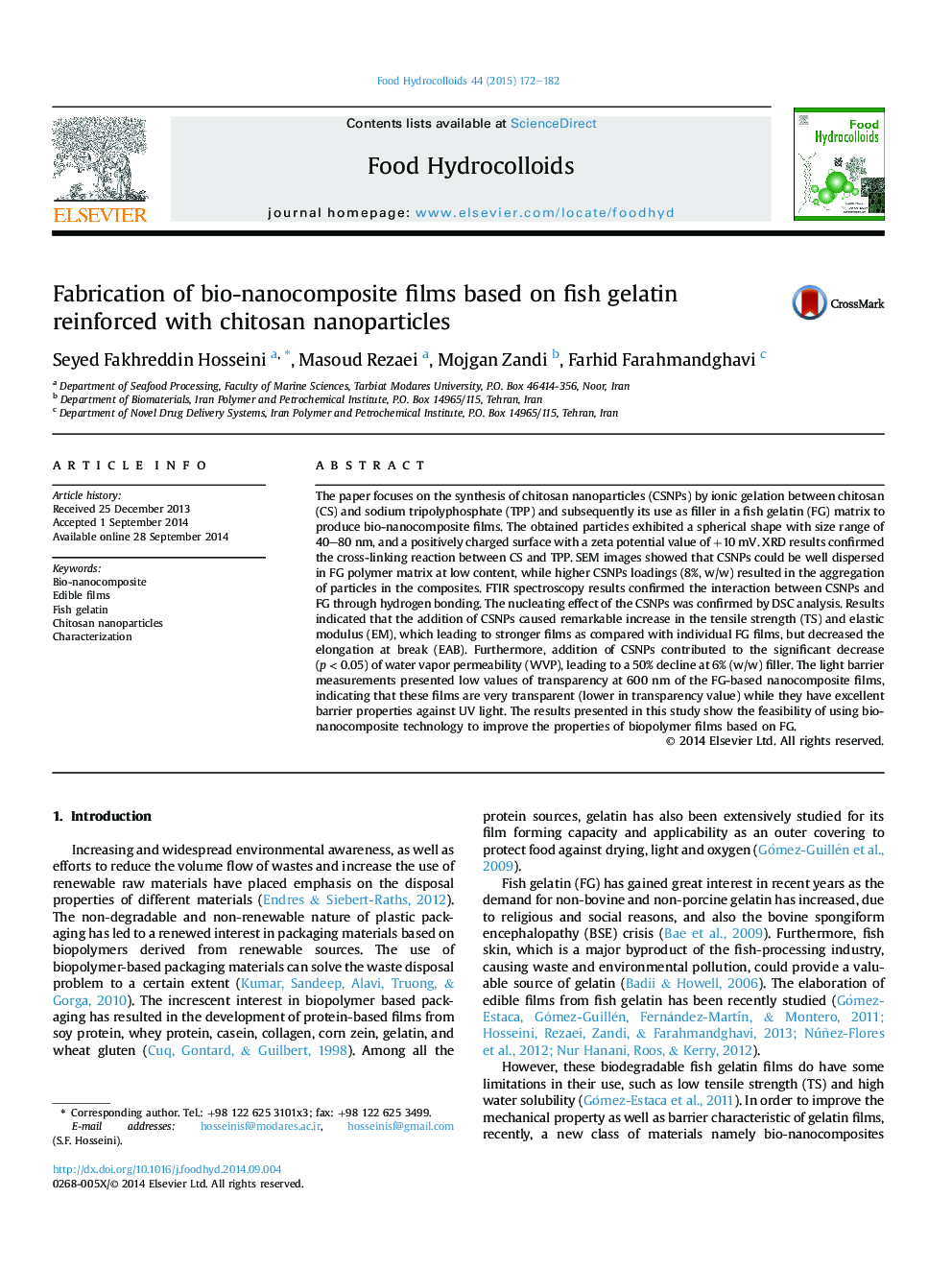| کد مقاله | کد نشریه | سال انتشار | مقاله انگلیسی | نسخه تمام متن |
|---|---|---|---|---|
| 603814 | 1454432 | 2015 | 11 صفحه PDF | دانلود رایگان |
• CSNPs had spherical shape and size range about 40–80 nm.
• FG-based nanocomposite films were prepared using solution casting method.
• Incorporation of CSNPs improved the mechanical properties of the FG film.
• 6% (w/w) CSNPs loading decreased the WVP of the FG film by 50%.
The paper focuses on the synthesis of chitosan nanoparticles (CSNPs) by ionic gelation between chitosan (CS) and sodium tripolyphosphate (TPP) and subsequently its use as filler in a fish gelatin (FG) matrix to produce bio-nanocomposite films. The obtained particles exhibited a spherical shape with size range of 40–80 nm, and a positively charged surface with a zeta potential value of +10 mV. XRD results confirmed the cross-linking reaction between CS and TPP. SEM images showed that CSNPs could be well dispersed in FG polymer matrix at low content, while higher CSNPs loadings (8%, w/w) resulted in the aggregation of particles in the composites. FTIR spectroscopy results confirmed the interaction between CSNPs and FG through hydrogen bonding. The nucleating effect of the CSNPs was confirmed by DSC analysis. Results indicated that the addition of CSNPs caused remarkable increase in the tensile strength (TS) and elastic modulus (EM), which leading to stronger films as compared with individual FG films, but decreased the elongation at break (EAB). Furthermore, addition of CSNPs contributed to the significant decrease (p < 0.05) of water vapor permeability (WVP), leading to a 50% decline at 6% (w/w) filler. The light barrier measurements presented low values of transparency at 600 nm of the FG-based nanocomposite films, indicating that these films are very transparent (lower in transparency value) while they have excellent barrier properties against UV light. The results presented in this study show the feasibility of using bio-nanocomposite technology to improve the properties of biopolymer films based on FG.
Figure optionsDownload as PowerPoint slide
Journal: Food Hydrocolloids - Volume 44, February 2015, Pages 172–182
